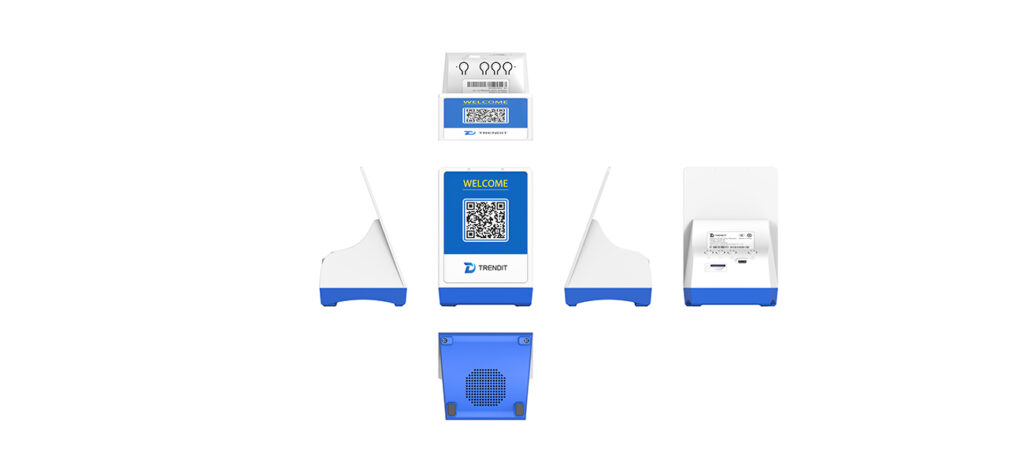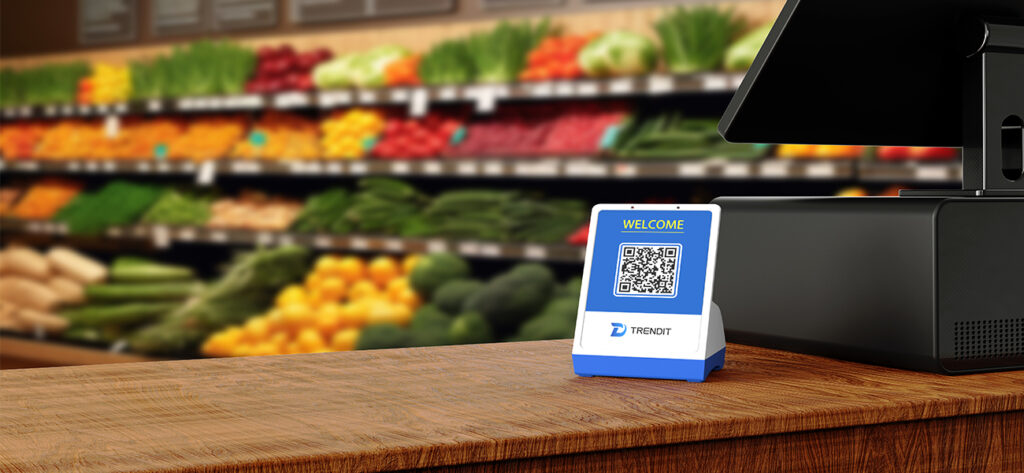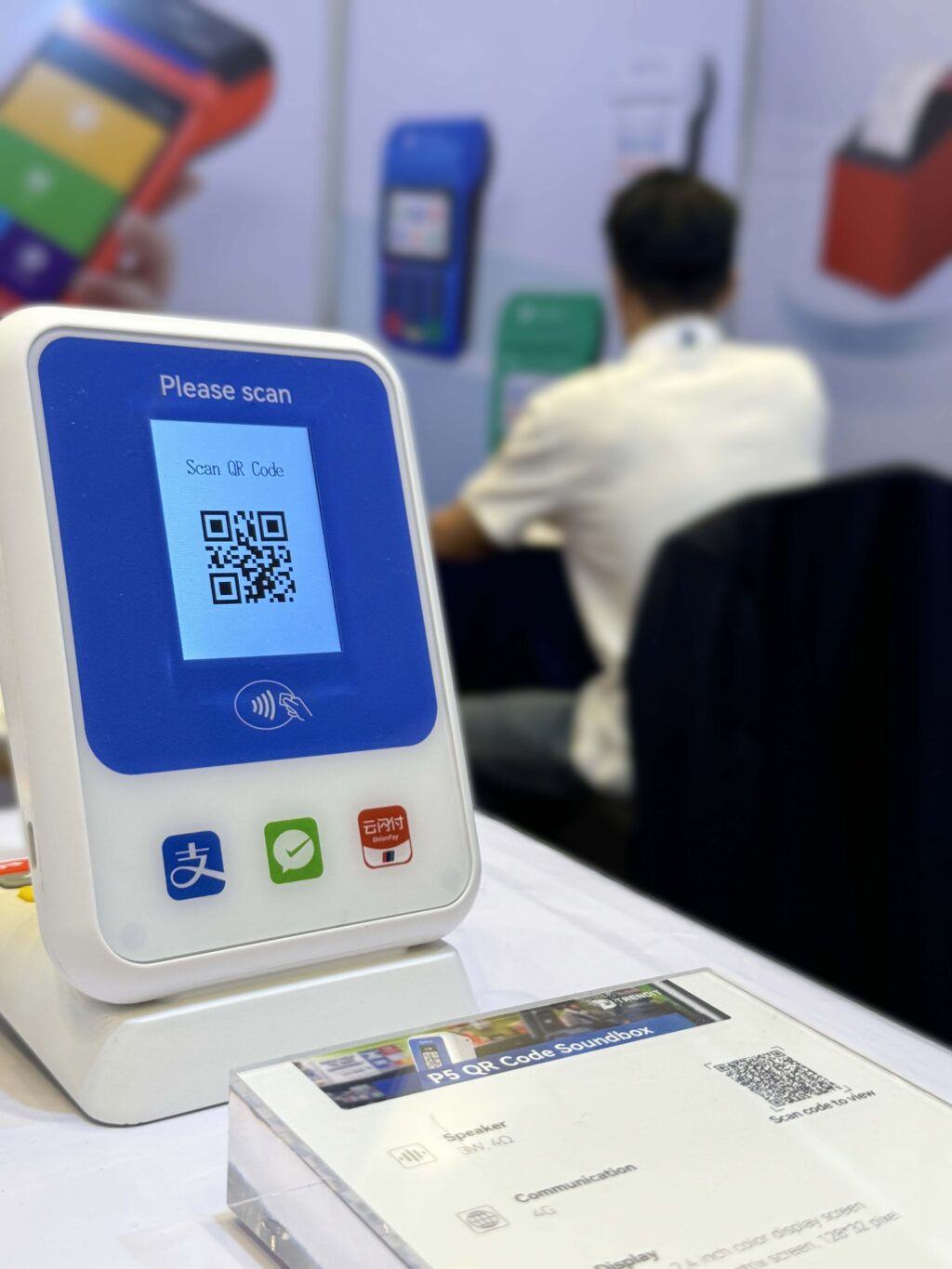Introduction
In the rapidly evolving digital landscape, the QR Code has transitioned from a simple tool for tracking automotive parts to a multifaceted gateway bridging the physical and digital worlds. These black and white matrix barcodes are now at the forefront of innovative user engagement strategies across diverse industries, from retail to education. However, a groundbreaking advancement is reshaping our interaction with these ubiquitous codes: the advent of QR Code Sound Boxes.
QR Code Sound Boxes represent a paradigm shift, blending auditory and visual stimuli to create immersive experiences that captivate users’ senses. Unlike their traditional counterparts, which solely offer visual data, these innovative devices also play audio content when scanned. This dual-functionality not only enriches the user experience but also expands the utility of QR codes beyond mere visual communication. From educational tools that provide auditory learning aids to retail environments where promotional messages can be heard, QR Code Sound Boxes are setting a new standard in how we interact with digital content. Their rise heralds a new era in consumer engagement, transforming passive scanning into an interactive, multisensory experience that promises to revolutionize industries worldwide.
Understanding QR Codes
Definition and History of QR Codes
QR codes, short for Quick Response codes, are two-dimensional barcodes that can store a large amount of information compared to traditional barcodes. They were first created in 1994 by a subsidiary of Toyota to track vehicles during the manufacturing process. The QR code’s design allows it to be decoded at high speed, making it ideal for various applications beyond vehicle tracking.
Common Applications of QR Codes
QR codes have found widespread use in various industries. In marketing, they are used to provide additional product information, promotions, and discounts.
In education, QR codes can be used to provide supplementary learning materials or to access online resources. QR codes are also used for event ticketing, electronic payments, and even for accessing Wi-Fi networks.
Advantages and Limitations of Using QR Codes
One of the main advantages of QR codes is their versatility and ease of use. They can store different types of data, including URLs, text, and contact information.
QR codes are also easily scannable using smartphones, making them accessible to a wide audience. However, QR codes also have limitations.
They require a QR code reader application to decode, which may not be available on all devices. Additionally, QR codes can be susceptible to damage, which can render them unreadable.
Evolution of Sound Technology in QR Codes
Harmonizing Visual and Auditory Experiences
In the realm of QR codes, where visual stimuli dominate, the integration of sound marks a significant evolutionary leap. This convergence of sight and sound isn’t merely about novelty; it’s a strategic fusion that amplifies the communicative power of QR codes.
The transition from static visuals to dynamic audio-visual experiences represents a paradigm shift, promising immersive interactions that resonate with users on a deeper level. This evolution isn’t just about adding sound to codes but redefining how we engage with digital content, blurring the lines between the virtual and physical worlds.
Introduction to the concept of sound boxes in relation to QR codes
The concept of sound boxes within QR codes is a revelation in user engagement strategies. Unlike conventional QR codes that rely solely on visual cues, sound boxes embed audio elements seamlessly into the code’s structure.
Imagine scanning a QR code not just to access information but to be greeted by a melodic welcome or a narrated story. This concept transcends the limitations of static visuals, offering a multisensory experience that captivates and leaves a lasting impression.
How sound technology is integrated into traditional static QR codes
The integration of sound technology into traditional static QR codes involves a meticulous process of encoding audio data within the code’s matrix. Advanced algorithms compress audio files without compromising quality, ensuring a seamless playback experience upon scanning. The code acts as a gateway, unlocking a symphony of sounds that complement the visual narrative, making the interaction not just informative but enchanting.
Benefits of incorporating audio elements into visual codes
Incorporating audio elements into visual codes amplifies their utility and impact across diverse domains. From enhancing accessibility for visually impaired individuals to creating engaging marketing campaigns, the benefits are multifaceted.
Audio-infused QR codes transcend language barriers, deliver nuanced messages, and evoke emotional responses, forging deeper connections with audiences. This synergy of audio and visual stimuli not only increases engagement but also elevates the overall user experience, making QR code sound boxes a formidable tool in the digital landscape.

Functionality and Components of a QR Code Sound Box
The Interactive Experience: How Users Engage with QR Code Sound Boxes
When encountering a QR code sound box, users are prompted to scan the QR code using their smartphone or a QR code scanner app. Once scanned, the code directs the user to a webpage or a specific URL where audio content is stored.
This content can range from music, spoken messages, instructional audio, or any other auditory experience the creator intends. Users can then listen to this audio content directly from their devices, essentially transforming a static visual code into an interactive audio-visual experience.
Hardware Components: Building Blocks of a QR Code Sound Box
Creating a QR code sound box requires several key hardware components. The most essential component is a speaker, which can be built into the device displaying the QR code or connected wirelessly. Additionally, a microcontroller is needed to process the QR code data and trigger the playback of the audio content.
This microcontroller can be part of the device or a separate module. Depending on the complexity of the sound box, other components like amplifiers, batteries, and sensors may also be necessary to enhance the user experience.
Software Aspects: Encoding Audio Files into QR Codes
The process of encoding audio files into QR codes involves converting the audio data into a format that can be represented by the QR code. This is typically done using specialized software that generates a QR code containing a URL pointing to the audio file.
When the QR code is scanned, the URL is accessed, and the audio file is streamed or downloaded to the user’s device for playback. It’s crucial to optimize the audio file for size and quality to ensure quick scanning and seamless playback, especially considering the limited storage capacity of QR codes.

Applications and Use Cases
Marketing and Advertising: Engaging Customers with Interactive Audio-Visual Campaigns
In the realm of marketing and advertising, QR Code Sound Boxes represent a groundbreaking tool for creating immersive and interactive campaigns. Imagine a scenario where a consumer encounters a QR code on a product package or a billboard. Instead of merely directing them to a website or a static image, the QR code can trigger a multimedia experience that combines visual content with audio narratives.
For instance, a fashion brand could use a QR Code Sound Box to showcase a new collection through a virtual runway experience, complete with commentary from the designer and background music that enhances the ambiance. This approach not only captures attention but also provides a richer brand experience that fosters deeper engagement and emotional connection with the audience.
Education: Enhancing Learning Experiences through Multimedia Content Delivery
In educational settings, QR Code Sound Boxes offer an innovative way to deliver educational content that is engaging and accessible. Imagine students exploring a historical exhibit where QR codes placed strategically next to artifacts provide instant access to narrated explanations, interviews with historians, or audio clips of significant events.
This interactive approach transforms learning into a multisensory experience, catering to different learning styles and enhancing retention. Moreover, educators can leverage QR Code Sound Boxes to create interactive textbooks or supplementary materials that include audio explanations of complex concepts, bringing subjects like science or literature to life in a way that traditional textbooks cannot.
Tourism: Providing Audio Guides at Historical Sites or Museums
For tourists visiting historical sites or museums, QR Code Sound Boxes serve as invaluable tools for enriching their exploration. Instead of relying solely on written descriptions or guided tours, visitors can use their smartphones to scan QR codes placed throughout the site. Each code can trigger audio guides that offer detailed explanations of artifacts, architectural features, or historical events associated with the location.
This self-guided approach allows tourists to explore at their own pace while immersing themselves in the stories and contexts that make each site unique. Furthermore, QR Code Sound Boxes can cater to international visitors by offering audio guides in multiple languages, ensuring accessibility and enhancing the overall visitor experience.
These applications demonstrate the versatility of QR Code Sound Boxes beyond their traditional uses, highlighting their potential to revolutionize engagement in marketing, education, and tourism sectors alike. As technology continues to evolve, these interactive tools are poised to become integral components of how we consume information and experience the world around us.

Technical Challenges and Solutions
Data Storage Limitations within the Code
One of the primary challenges faced in implementing QR code sound boxes is the limited data storage capacity of QR codes themselves. Traditional QR codes have a maximum storage capacity of around 4,296 characters when using the most efficient encoding method, which constrains the amount of audio data that can be embedded directly into the code. This limitation necessitates careful selection and compression of audio files to ensure they fit within the QR code’s capacity while maintaining acceptable sound quality.
Solutions to this challenge often involve using advanced audio compression techniques such as AAC or MP3 to reduce file sizes without significant loss of audio fidelity. Additionally, optimizing the encoding process itself can help maximize the available space within the QR code for audio data, thereby enhancing user experience without compromising on content quality.
Security Concerns Related to Accessing External Content via a Code
Integrating sound technology into QR codes introduces notable security considerations, particularly regarding the potential risks associated with accessing external content via a scanned QR code. Malicious actors could exploit QR code vulnerabilities to redirect users to harmful websites, initiate unauthorized downloads, or execute phishing attacks. To mitigate these risks, stringent security protocols must be implemented during the creation and deployment of QR code sound boxes.
This includes employing secure hosting services for audio files, implementing encryption mechanisms to protect data transmission, and validating the integrity of content accessed through QR codes. Educating users about safe scanning practices and providing clear instructions on expected outcomes can also help prevent security breaches and build trust in QR code-based sound experiences.
Compatibility Issues Across Different Devices
Ensuring seamless compatibility across various devices poses another significant challenge for QR code sound boxes. Different smartphones, tablets, and other scanning devices may vary in their QR code scanning capabilities, audio decoding formats, and operating system requirements. This diversity can lead to inconsistencies in user experience, where some devices may struggle to decode embedded audio files or properly render multimedia content associated with QR codes.
Addressing compatibility issues involves extensive testing across multiple devices and platforms to identify potential performance gaps and compatibility constraints. Developers often employ cross-platform development frameworks and adhere to widely accepted standards for QR code generation and audio encoding to maximize compatibility.
Additionally, providing alternative access methods such as web links or app integrations can ensure a consistent experience across devices, thereby enhancing the usability and accessibility of QR code sound box applications. These technical challenges underscore the complexities involved in integrating sound technology with QR codes, necessitating innovative solutions to optimize functionality, security, and user experience in QR code sound box implementations.
Potential Advancements in Sound Technology Integration
Subtitle: Harmonizing the Future of Sound and QR Codes As technology continues to advance, the integration of sound technology with QR codes is expected to undergo significant developments.
One exciting possibility is the incorporation of spatial audio, allowing for a more immersive and realistic experience when interacting with QR Code Sound Boxes. This could open up new avenues for storytelling, educational content, and interactive marketing campaigns.
Additionally, advancements in audio compression techniques may enable the storage of longer and higher quality audio files within the QR code itself, enhancing the overall user experience. Furthermore, the potential integration of haptic feedback technology could add a tactile dimension to the audio-visual interaction, creating a truly multi-sensory experience for users engaging with QR Code Speaker Boxes.
Expansion into New Industries Beyond Marketing
Subtitle: Sonic Versatility: Beyond Marketing Applications The future of QR Code Sound Boxes extends far beyond marketing applications. With advancements in sound technology integration, these innovative devices are poised to make meaningful strides into diverse industries such as healthcare, entertainment, and tourism.
In healthcare settings, QR Code Payment Sound Boxes could be utilized to provide auditory medication reminders or patient education resources. Entertainment venues may leverage sound-enhanced QR codes to deliver interactive experiences at concerts or art installations.
Furthermore, tourism organizations can utilize QR Code Speaker Boxes to offer immersive audio guides at historical sites or museums. The potential for expansion into these industries underscores the versatility and wide-ranging impact of QR Code Sound Box technology.
Trendit Technology: Premier Manufacturer Of QR Code Payment Sound Boxes
Trendit Technology stands out in the global market as a leading manufacturer specializing in QR code payment sound boxes, among other advanced POS solutions. Renowned for their robust transaction technologies, Trendit offers a comprehensive range of products designed to enhance the payment experiences across various industries. Each year, over 2.5 million merchants globally choose Trendit for their reliable POS hardware and software, which include not only static and dynamic QR code payment sound boxes but also Android POS terminals and Linux POS machines.
Trendit’s commitment to excellence is underpinned by significant investments in research and development, with over 10% of annual profits dedicated to advancing their technology. This dedication ensures the continuous enhancement of their products and the introduction of cutting-edge features that meet the evolving needs of the market.
Furthermore, Trendit maintains strong supply chain relationships and upholds rigorous quality standards, ensuring that all products, including their QR code payment sound boxes, meet global certification requirements such as PCI, EMV, VISA, Mastercard, Discover, AMEX, CE, and FCC. The company also offers extensive customization options and collaborative development opportunities for payment service providers, banks, and software vendors, catering to specific industry needs with OEM, ODM, and CKD/SKD services.
By choosing Trendit Technology, clients are assured of accessing cost-effective, high-quality transaction solutions that are both reliable and innovative. With its comprehensive product range, strong R&D focus, and exceptional customer service, Trendit Technology is your trusted partner for advanced QR code payment sound boxes and other POS solutions.

Conclusion
As we conclude, it’s clear that QR Code Sound Boxes are not just another technological novelty; they are a significant leap forward in the way we think about and interact with digital information. By integrating sound with traditional QR codes, these devices enhance user engagement and open up new avenues for creative and educational content delivery. They offer a tantalizing preview of a future where digital interactions are more intuitive, engaging, and multisensory.
The potential for QR Code Sound Boxes extends far beyond simple marketing gimmicks. In educational settings, they can provide a more immersive learning experience; in retail, they transform the shopping experience with interactive, audible promotions; in tourism, they could offer guided tours without the need for additional equipment. The implications are as vast as they are exciting.
As this technology continues to evolve, we can expect QR Code Sound Boxes to become a common feature in our daily interactions, making the blend of auditory and visual stimuli a standard in consumer engagement. The resonant future we envision is one where technology not only meets the needs of businesses but also enriches the lives of users across the globe, creating more dynamic, accessible, and engaging experiences for everyone.
This conclusion highlights the transformative impact of QR Code Sound Boxes and underscores the broad potential of this technology to enhance interactive experiences across various domains.
